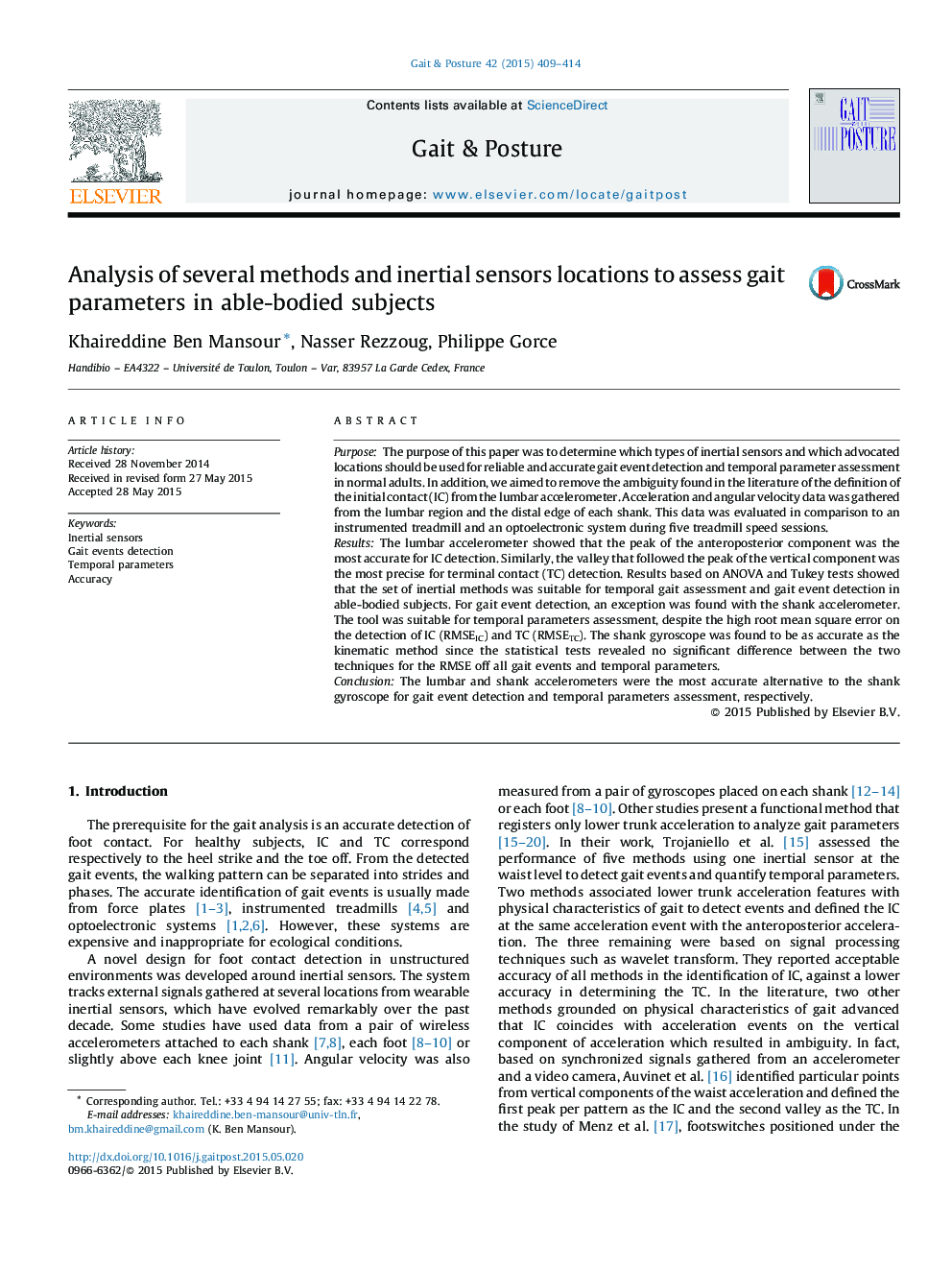| Article ID | Journal | Published Year | Pages | File Type |
|---|---|---|---|---|
| 4055728 | Gait & Posture | 2015 | 6 Pages |
•We studied wearable sensors type and location for gait parameters assessment.•We removed the ambiguity of the initial contact definition from lumbar accelerometer.•The sensors were validated against instrumented treadmill and optoelectronic system.•The shank gyroscope is the most accurate followed by the accelerometer methods.
PurposeThe purpose of this paper was to determine which types of inertial sensors and which advocated locations should be used for reliable and accurate gait event detection and temporal parameter assessment in normal adults. In addition, we aimed to remove the ambiguity found in the literature of the definition of the initial contact (IC) from the lumbar accelerometer. Acceleration and angular velocity data was gathered from the lumbar region and the distal edge of each shank. This data was evaluated in comparison to an instrumented treadmill and an optoelectronic system during five treadmill speed sessions.ResultsThe lumbar accelerometer showed that the peak of the anteroposterior component was the most accurate for IC detection. Similarly, the valley that followed the peak of the vertical component was the most precise for terminal contact (TC) detection. Results based on ANOVA and Tukey tests showed that the set of inertial methods was suitable for temporal gait assessment and gait event detection in able-bodied subjects. For gait event detection, an exception was found with the shank accelerometer. The tool was suitable for temporal parameters assessment, despite the high root mean square error on the detection of IC (RMSEIC) and TC (RMSETC). The shank gyroscope was found to be as accurate as the kinematic method since the statistical tests revealed no significant difference between the two techniques for the RMSE off all gait events and temporal parameters.ConclusionThe lumbar and shank accelerometers were the most accurate alternative to the shank gyroscope for gait event detection and temporal parameters assessment, respectively.
